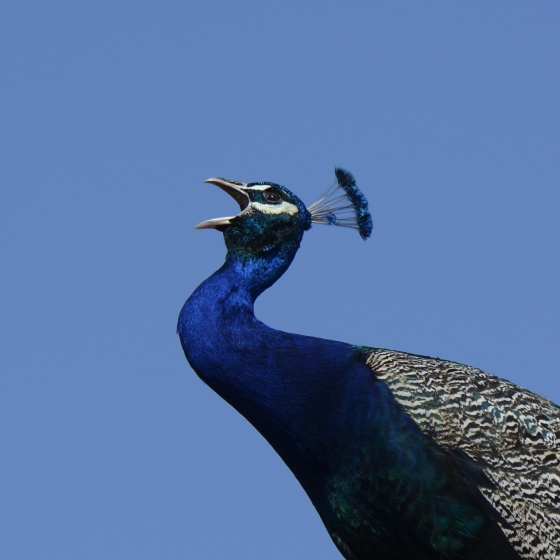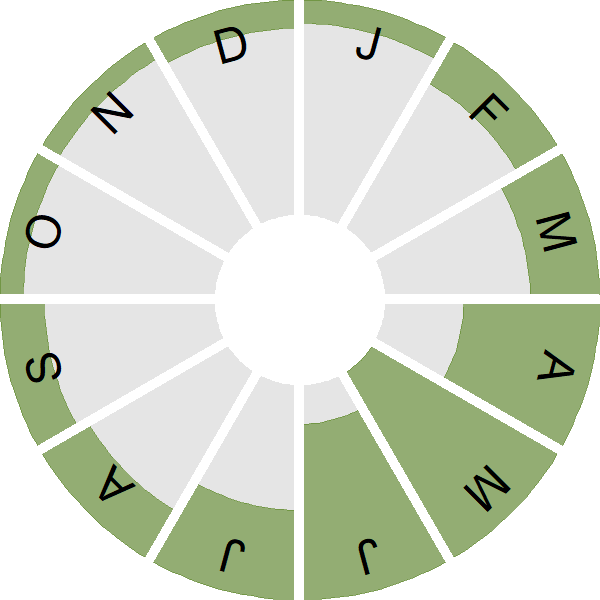Indian Peafowl

Introduction
The Indian Peafowl, will be familiar as an ornamental species, often associated with stately homes, but the free-flying nature and tendency to wander some distance mean that individuals can turn up elsewhere.
Inclusion of the species in Bird Atlas 2007–11 was a step forward in being able to establish the distribution of this species and the extent to which it has naturalized.

Key Stats
Status and Trends
Conservation Status
Population Size
Population Change
Population trends of this scarce species are not routinely monitored.
Distribution
The Indian Peafowl is familiar to many as an ornamental species associated with stately homes, ornamental parks and country estates. These birds are usually free-flying and many individuals wander some distance and attempt to breed in the wild. Historically, such birds have not been routinely documented because birdwatchers tend not to record exotic species, and judging when birds are wild-ranging is problematic. These maps show the extensive nature of winter and breeding distributions and are probably underestimates of the true status of this species.
Occupied 10-km squares in UK
or view it on Bird Atlas Mapstore.
or view it on Bird Atlas Mapstore.
Distribution Change
No previous atlas records exist for this species so it is impossible to assess changes in range.
or view it on Bird Atlas Mapstore.
or view it on Bird Atlas Mapstore.
Seasonality
Indian Peafowl is a naturalised non-native and present throughout the year.
Weekly pattern of occurrence
The graph shows when the species is present in the UK, with taller bars indicating a higher likelihood of encountering the species in appropriate regions and habitats.

Movement
Britain & Ireland movement
Biology
Survival and Longevity
Survival is shown as the proportion of birds surviving from one year to the next and is derived from bird ringing data. It can also be used to estimate how long birds typically live.
Classification, names and codes
Classification and Codes
- Order: Galliformes
- Family: Phasianidae
- Scientific name: Pavo cristatus
- Authority: Linnaeus, 1758
- BTO 2-letter code: PX
- BTO 5-letter code: INDPE
- Euring code number: 35670
Alternate species names
- Catalan: paó comu
- Czech: páv korunkatý
- Danish: Påfugl
- Dutch: Blauwe Pauw
- Estonian: sini-paabulind
- Finnish: riikinkukko
- French: Paon bleu
- German: Pfau
- Hungarian: indiai páva
- Italian: Pavone indiano
- Lithuanian: paprastasis povas
- Norwegian: Indiapåfugl
- Polish: paw indyjski
- Portuguese: pavão-azul
- Slovak: páv korunkatý
- Spanish: Pavo real común
- Swedish: påfågel
- Welsh: Paun
- English folkname(s): Common / Indian/ Blue Peafowl

